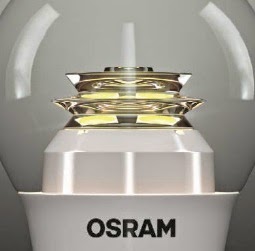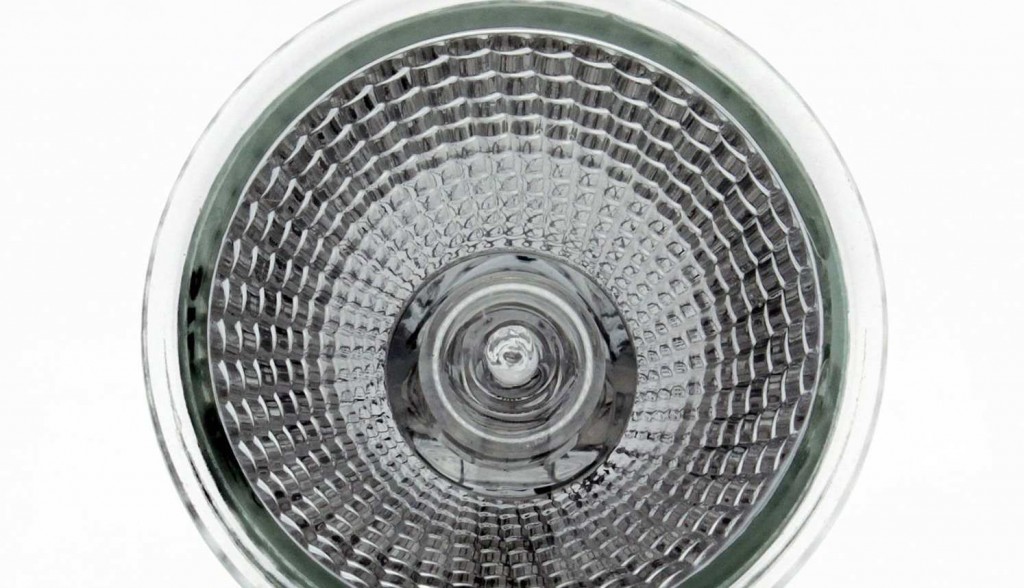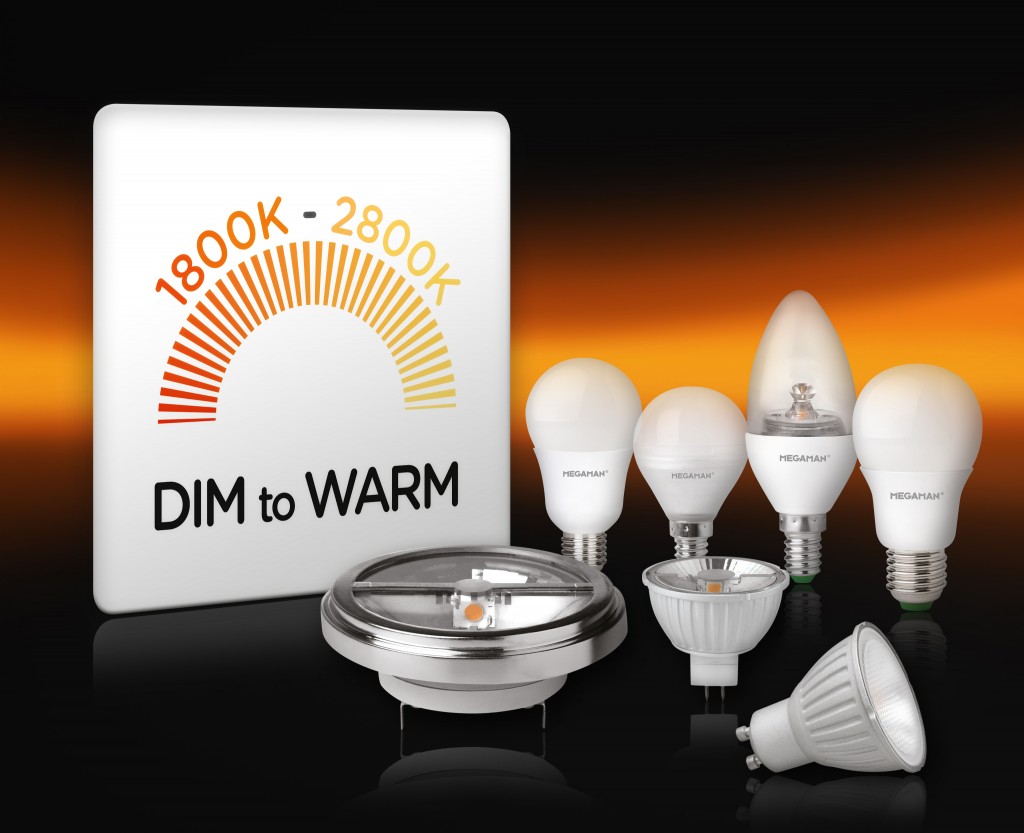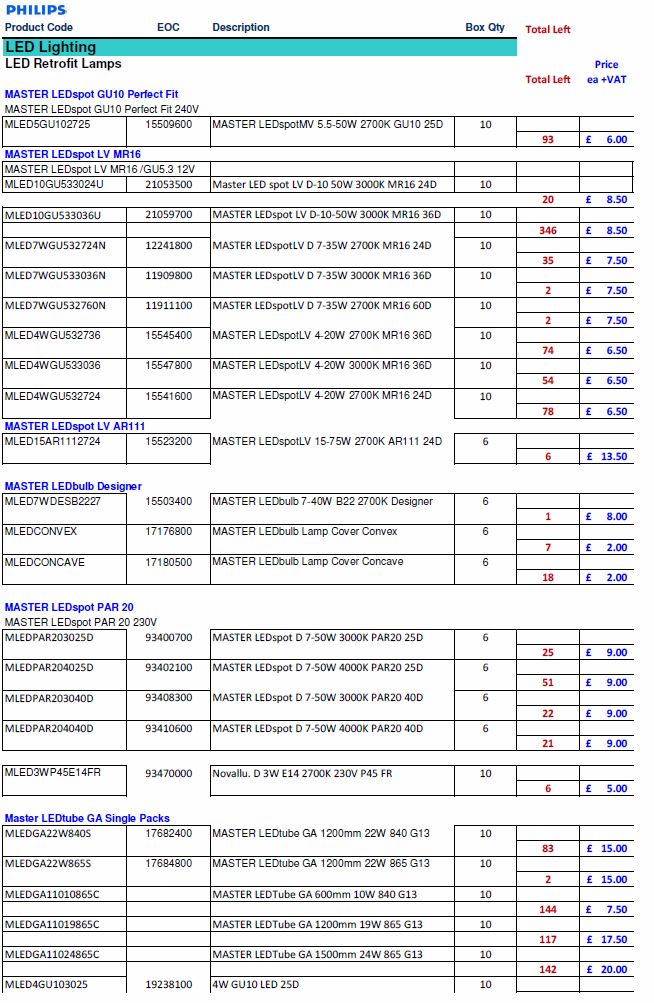CAT | LED MR16 lamps
6
EC upholds decision to ban mains-voltage directional halogens
Comments off · Posted by admin in LED, LED GU10, LED MR16 lamps
The European Commission has stuck with its decision to phase out mains-voltage halogen directional lamps from the European market in September 2016 following a review. The move has been described as a win for consumers and the environment by industry figures.
“Earlier this year we saw an EU vote delaying the phase out of non-directional halogen lamps until 2018 and this threw into question which way the balance would swing for their mains-voltage directional cousins,” commented Fred Bass, managing director of Neonlite International, owner of Megaman. “However, common sense has ruled and these highly inefficient light sources will now be phased out within a year.”
As part of the review of the lighting directive EC 1194/2012, four criteria needed to be assessed before a phase-out could be confirmed. Issues of affordability were under scrutiny, as well performance, equivalence to existing models and compatibility. The EU has confirmed that there is no reason to delay the ban on mains voltage directional halogen lamps, as all these areas have been sufficiently met.
“This ruling brings us one step closer to the eventual removal of all high-energy consuming halogens and can only be a positive move for both consumers and the environment alike,” Bass told Lux. “I stand by what I said when commenting on the delay in banning non-directional halogens earlier in the year, I truly believe that market forces will begin to take over in Europe and LEDs will win through, no matter when all halogens are eventually banned. High quality LED lamps are out there already, they do save money and energy and consumers will begin to convert to them more and more as they realise the benefits.”
Retrofit your premises with LED lighting today. Visit www.novelenergylighting.com to review our range of LED GU10 and LED MR16 lamps amongst other types. Call us to discuss volume orders: Tel: 0208-540-8287
energy efficient lighting · halogen ban · halogen lamps · led GU10 · led lighting · led mr16 · Novel Energy Lighting
9
Megamans New Dim-To-Warm Provides A More Intimate Lighting Experience
Comments off · Posted by admin in LED, LED Candles, LED GLS, LED GU10, LED MR16 lamps, LED Spots
Megaman has achieved another industry first with the launch of a wide range of LED products that incorporate a new Dim to Warm system which provides improved dimming performance with the warmth and characteristics of halogen.
Megaman has achieved another industry first with the launch of a wide range of LED products that incorporate a new Dim to Warm system which provides improved dimming performance with the warmth and characteristics of halogen. These LED’s emit a warmer light when they are dimmed with a colour temperature that changes smoothly from 2800K to 1800K when dimmed from 100% to 10%.
dim to warm · dimtone · LED AR111 · led candle · led GU10 · LED lamps · led lighting · led mr16 · megaman · Megaman LED · megaman lighting · Novel Energy Lighting
24
Introducing Exciting New Products from Megaman in 2015
Comments off · Posted by admin in LED, LED Candles, LED downlights, LED GLS, LED GU10, LED MR16 lamps, LED Spots, LED Tubes
Megaman Catalogue 2015
Megaman have launched their new product catalogue for 2015. With 20 years of experience in the industry, Megaman low energy lighting continues to lead the field in product design and performance. The product range has moved almost fully to LED and away from CFL as new technologies supersede old.
Megaman have also launched a brand new range of stylish fixtures, including integrated LED fittings, recessed downlights, track fittings, battens and LED panels – for applications such as retail, hotels, restaurants, homes and offices. The extensive range of interior and exterior light fittings are designed around LED lighting, promoting energy efficiency and delivering high performance lighting effects in commercial and residential applications.
Megaman are also proud to announce the introduction of some new innovative technologies, including:
- Dim to Warm – a comprehensive range of lamps that smoothly dim down from 2800K to 1800K, simulating the characteristics of halogen.
- Perfect White – LEDs that intensify and brighten the colour white, perfect for retail lighting.
- Ingenium BLU – Bluetooth enabled LED lamps which use Bluetooth technology to connect to and control our lighting.
Visit Novel Energy Lighting to view our range of Megaman LED products
energy efficient lighting · led GU10 · led lighting · megaman · megaman gu10 · Megaman LED · Novel Energy Lighting
3
Megaman Get Down to Serious Energy Saving at the Down Hall Hotel
Comments off · Posted by admin in LED, LED Candles, LED downlights, LED GLS, LED GU10, LED MR16 lamps, LED Spots, LED Tubes
The Down Hall Hotel, one of the UK’s most established country house hotels, has achieved considerable energy savings on lighting thanks to a simple retrofit to Megaman LED lamps. With Phase 1 of the project concentrating on the main function rooms, lounge and anti-lounge areas, the current estimated figures are 7736kw of energy saved per annum which equates to an annual CO2 saving of 4.21 tons.
Located in Hatfield Heath on the Hertfordshire/Essex borders, Down Hall was built in the Italianate style of architecture, which was a distinct 19th century phase in the history of Classical architecture and the hotel dates back to 1322 with luxurious interior and ornate ceilings, all set in 110 acres of parkland. The hotel has many high ceiling function rooms including the Prior Suite, and this was the first room to be considered for the new LED lamps.
With chandeliers and wall lights in constant use, the old Halogen 28W lamps were constantly failing which meant a scaffolding tower had to be erected each time to replace the lamps, taking up valuable maintenance time and causing serious potential health and safety issues. On review of the lighting it was agreed to switch the existing lighting to Megaman’s 5w candle lamps in warm white, which also offer dimming capabilities for changing the ambience of the room at different times of the day and evening. On completion of the Prior Suite, the staff at Down Hall were so delighted with the result that the other function rooms, namely
Rookwood, Lyndhurst, Harley and the lounge and anti-lounge, were also changed to the new LED lamps. Bob Parker at Down Hall commented “We are extremely happy with the new LED lamps which, apart from the energy savings achieved, actually look better and complement the existing fittings, plus they offer 50,000 hours life. The light output is excellent and staff are commenting that the new lighting has improved the whole ambience of the building. We are now in the process of putting Phase 2 into action which will include the Bridgeman Selwin Suites which is our main ballroom for wedding receptions”.
Novel Energy Lighting supplies LED lighting to the hospitality sector and can provide many references of hotels which have been retrofitted. We sell LED lamps and fittings, and can provide services such as surveys, lighting designs, and installation to help you start saving energy as quickly as possible.
Call us: 0208-540-8287, or email: sales@novelenergylighting.com for more information
energy efficient lighting · hopsitality lighting · hotel lighting · led bulbs · LED Candles · led GU10 · LED lamps · led lighting · led mr16 · led tube · Novel Energy Lighting
26
The halogen ban: Just do it!
Comments off · Posted by admin in LED, LED downlights, LED GU10, LED MR16 lamps, LED Spots, Philips LED

Afterglow: This tone from a halogen lamp could soon fade into history if the EC sticks with its 2016 ban on one of the last vestiges of the incandescent business – halogens.
LUX Reports: Neonlite director Fred Bass argues against the industry’s case to keep energy guzzling halogens alive, calling such a move ‘nonsensical.’
—
Sometime in the next few weeks, the European Commission is expected to vote on whether to delay a ban on halogen lamps. Halogens are the last real bastion of incandescent technology. They are a thriving holdover of conventional filament burning bulbs – superior in many ways to standard filament lamps because they are treated with a halogen gas, improving their colour temperature and their efficiency.
Although the industry has long promoted them for their so-called ‘eco’ benefits, they are only slightly more efficient than the conventional filament bulbs that the EC has already widely banished. They are terribly inefficient compared to modern LED (light-emitting diode) and CFL (compact fluorescent) bulbs. Thus, halogens are carbon culprits. That’s why the EC in 2009 scheduled them for a September 2016 retirement.
The conventional lighting industry, represented by the Brussels-based trade body LightingEurope, is now campaigning for a stay of halogen’s execution. It wants to push the halogen ban out by another four years – to 2020, nearly six years from now. It seems stuck between a rock and hard place: While it tries itself to steer consumers toward an LED future, it claims that quality, performance and price of LEDs will not be ready to meet mass consumer demand until 2020. Europeans today are buying more halogens than anything – more even than CFLs it notes, warning of a bulb shortage if the ban takes hold. As good as LEDs are, they just aren’t ready yet to provide the same quality of light as halogen at an affordable price, nor will they be by 2016, LightingEurope claims. It notes that LEDs lamps are still too different from conventional lamps in appearance, price and quality, and that this difference is confusing consumers.
‘Nonsense,’ say LightingEurope’s critics. LEDs have arrived, are more than ready for prime time, and the sooner the better from an environmental perspective. The conventional industry has had already had half a dozen years to prepare for the ban, which, ironically, it lobbied for itself in the first place. If the big traditional lighting companies like Philips, Osram and GE can’t meet LED demand, then the newfangled companies born in the CFL and LED era can – companies such as Aurora, Neonlite, TCP, LIFX, Opple, Cree, Acuity – they note. Some suggest that the big companies are simply trying to hold onto their old ‘replacement bulb’ business model for as long as possible while they make the difficult transition to LEDs, which vendors say last for 20 years.
Lux recently spoke at length with two leading voices on opposite sides of the issue: Diederik de Stoppelaar, secretary general of LightingEurope, and Fred Bass, a director of Hong Kong-based Neonlite and managing director of its UK-based Neonlite International group, which includes the Megaman brand of LED lamps. Neonlite has no incandescent legacy. It started life some 20 years ago as a CFL company, and today about 90 percent of its business is in LEDs. Bass firmly opposes any delay to the halogen ban.
 Bass (pictured, right) and de Stoppelaar are not completely at odds. They agree that the industry must weed out inferior LED products that are tarnishing the technology’s reputation. They also implore the industry to clear up the confusion surrounding the relative merits of the different lamp technologies – confusion that the industry itself fosters through loose, or at least non-uniform, performance claims via packaging and merchandising.
Bass (pictured, right) and de Stoppelaar are not completely at odds. They agree that the industry must weed out inferior LED products that are tarnishing the technology’s reputation. They also implore the industry to clear up the confusion surrounding the relative merits of the different lamp technologies – confusion that the industry itself fosters through loose, or at least non-uniform, performance claims via packaging and merchandising.
But they couldn’t be further apart on the subject of the ban. In a two-part series, we bring you an edited version of our questions and answers with de Stoppelaar and Bass. Yesterday, de Stoppelaar made the case for delaying the ban until 2020. Today, Bass lays out why the EC should stick to its guns and just get on with the ban as planned:
Lux: The halogen ban is set for 2016, the EC is voting on pushing it back to 2018, and LightingEurope says that’s not even long enough of an extension. They want 2020. What’s your take on all of this?
Bass: I’m very much on the side of no delay at all. You’ve got to understand Megaman’s position. We’ve been making low energy lamps since we started 20 years back. We have no legacy in high energy lamps. We just have low energy. (Almost) all of our business is in LED. So to be fair my perspective is just go for the ban because obviously it suits my business. But taking that apart, if you just look a the bigger picture, the environmental picture and all athe rest of it, to me it makes no sense to delay when LED technology has moved at such a pace compared to all the market predictions. The price is half of what it was expected to be at this stage and it’s going to keep going at that pace. To consider pushing out the ban, it’s just nonsensical.
Right, but…
It would be less credible if they moved the dates. It was such a landmark decision. Then to sort of say ‘oh well the industry doesn’t really like it, we’re going to push the dates out,’ then I think the directives will lose their credibility. So you have the credibility issue, the energy issue, and you have technology that is moving at a much faster pace than was ever predicted. And you have LightingEurope saying we don’t want it to change until 2020. It’s very very strange to me. The consumer is only going to gain by switching to the new technology.
Is there any argument at all for delaying?
If there is a need to change a date you shouldn’t make big changes like 4 years, you should make modest changes, 1 year perhaps. I’m not in favour of any movement at all. I can accept that in some parts of Eastern Europe maybe, the standard of living, market pricing may make the lamps less affordable. I also accept that some of the lamp technology hasn’t got a direct LED replacement, so maybe there could be a case to say that certain types of lamps can be delayed but the vast majority of the common GLS type, A-lamp type products are available, they’re at the right price and to a standard which is good enough for the domestic market. It may not be a 50,000-hour lamp, but 15,000 hours is already good enough for 10 years use or whatever. I can’t understand why you’d push it back.
But then, as you said, you don’t have the legacy business to worry about, the way many of LightingEurope’s members do.
They have a different perspective. They’re not like Megaman without the legacy in halogen. These are big companies with lots of production in these areas. And clearly there must be a conflict of interest when they offer a view on the situation. On the one hand they want to see progress and environmental improvement and on the other hand they’ve got a vested interest in these older technologies as well. It’s not easy for them to manage the situation. But I can’t agree with their position.
Yes, it’s almost bizarre. The industry has been telling the world to move to LEDs for several years, and now their message is that LEDs aren’t ready.
It doesn’t ring true. LightingEurope was taking a a leading role in establishing legislation with Brussels getting the directive in place. They had lots of input. And for them to turn around now and say ‘we want to push it out four years,’ even though we see all the market indications moving faster than we anticipated, I have a problem with that. I suppose in principle we can leave the ban in place for the vast majority of lamps, and maybe there’s some compromise on some smaller issues where the technology isn’t quite ready on certain types or whatever. But I don’t see any need to change it on the mass market.
Are they just holding on to the vestiges of the good old business model of selling replacement lamps, and trying to extend that for as long as possible until they figure out how to make money from long lasting LEDs?
There’s probably something in that. There’s a massive price range in the market. That means margins on LEDs are now very very slim. And there’s an awful lot of new players in the market in LED. It’s fragmenting. If you look at that dynamic for the big players, their predictions on profit on LED will be quite different from what they were a few years ago. So in as much as we see a huge drop in the price of LEDs, that will hit clearly hit the potential profits of big manufacturers clearly. And there’s a lot of new players on the market, so I think market share of the large companies is an issue. If a huge volume of LEDs is required in two years time, I think the market can supply it, but maybe it’s not them.
So there’s not really an overall manufacturing capacity issue that will lead to the bulb shortage that LightingEurope is warning about?
From a Megaman perspective it’s an opportunity. Why isn’t it an opportunity for them as well? It’s odd. There’s going to be a very different model going forward. Five years down the line, whatever state the ban’s in, everybody will be using the longer lasting LED technology and therefore there won’t be the same replacement market. The dynamics of the whole lighting industry are changing. Everybody accepts that and we’re planning for it. We all understand that the traditional incandescent retrofit business is finished. Whether it finishes in 2016 or finishes in 2020, it’s finished.
A lot of LightingEurope jobs are in Europe. Closing down halogen lines could mean costly and politically difficult layoffs.
True. And there again there’s another conflict of interest. From a European perspective one tends to be very mindful of any threat to the loss of European jobs. That will be another factor in their argument. I still don’t think it’s sufficient to delay.
Although your company doesn’t have the legacy burden, it’s a tough business for any company new or old. Nobody’s future is guaranteed.
No. There are lots of new players in the market. It’s a very volatile situation. I’ve been in the business a long time. It’s the most exciting time I’ve ever had in the industry. When I started in the industry, we were using technologies that were 100 years old. Now nothing’s for sure.
So where will the money come from in the future?
It will be a combination of things. The retrofits will be very strong for I guess the next five years. But there will be an increasing amount of integrated fixtures business. The estimates are that in new builds, in five years time, half of the fittings will be LED. So we have to be in integrated fixtures as well as retrofits. And we have to be in other areas like smart controls. We don’t know how big that will be but we think it’s a very significant development; it adds considerably to energy savings. The Megaman philosophy is not to get into complex building management system, but to find solutions that can be fitted almost like a retrofit. Wireless systems and so on mean we have a ready market without rewiring a building.
What about the problem that LightingEurope secretary general Diederik de Stoppelaar mentioned – that there are non-brand names selling substandard lights at very low prices, tarnishing the reputation of the LED industry?
That’s one area where actually I agree with him. There’s a lot of new players. Market surveillance in Europe is a key issue that we’ve been going on about for many years – LightingEurope and ourselves. So I would agree, but I don’t see that that has anything to do with the delay in the ban. There is an issue with keeping out the rubbish but that is not I my mind any excuse for a delay. It’s nonsensical: ‘We’ve got rubbish in the market, we must delay the ban.’ What’s that got to do with anything? It’s a separate issue.
I think you also might agree with LightingEurope’s point that the industry needs clear, consistent marketing and merchandising in which the consumer can understand and trust the information on packaging, signage and so forth.
(Yes). I walk into a retail shop and I’m totally confused by the whole display in the lighting area. I’m a lighting guy for 35 years and I’m totally confused by the way it’s presented, the way it’s sold to the public. There’s an environmental organisation in Brussels, ECOS (European Environmental Citizens’ Organisation for Standardisation) where one guy, Edouard Toulouse is really big on this.He wants to change the whole way this thing is sold to the public. And I’m totally with him. It’s so confusing. Waht does the normal guy do when he walks in the store? What does he buy? It’s impossible. Lamp packaging and display is a mess. The industry knows it. The authorities know it. But it has nothing to do with whether you should ban the product or not.
Visit Novel Energy Lighting to get your LED retrofits for halogen lamps.
energy efficient lighting · Halogen Lamp · led bulb · led GU10 · led lamp · led lighting · led mr11 · led mr16 · Megaman LED · Novel Energy Lighting · philips led
23
Australias first H&M store is on trend with LED lighting
Comments off · Posted by admin in LED, LED Candles, LED downlights, LED GLS, LED GU10, LED MR16 lamps, LED panels, LED Spots, LED Tubes
When H&M arrived on Australia’s shores last year, it did so in style with a vast, mostly LED-lit flagship store in the former General Post Office building in Melbourne.
The building’s long history, and its 18 meter high ceiling, presented the facility team with a challenge of respecting its heritage while ensuring that the fixtures were as easy to maintain as possible.

This has been achieved mainly with linear LED luminaires, recessed from existing ceiling pockets, which focus the light down the central spine of the building’s three-storey glazed atrium.
Lighting designers kept in close contact with Heritage Victoria throughout the project and ensured that the lighting installation was fully reversible and didn’t do any damage to the building surface.
As well as recessed ceiling fixtures, linear LED luminaires have been placed high up to uplight the ceiling and emphasise the columns and the geometric shape of the atrium.

Lower down, mannequins sitting on swings and posing on podiums are lit with narrow-beam metal halide spotlights. The spotlights are placed in pairs on the columns around the atrium with linear LED uplights positioned in-between the spotlights to highlight the top part of the columns above.
The arcade arches around the building are lit with linear LED fixtures concealed within the structure. All light sources are warm white with a colour temperature of 3000k.
Using mainly LED light sources means the store has achieved an electrical load of 12W/m2 for the downward light and 10W/m2 for the architectural lighting to the arches, trees and ceiling structure.

Novel Energy Lighting supplies LED lamps, fittings, and controls for many retail applications. Contact us for volume quotes or for lighting designs: www.novelenergylighting.com, or Tel: 02085408287
energy efficient lighting · energy saving lighting · intelligent lighting · LED lamps · led lighting · led tubes · linear led · linear lighting · Novel Energy Lighting · retail lighting · shop lighting
21
What if every single hotel in the UK went LED?
Comments off · Posted by admin in Infographics, LED, LED downlights, LED GLS, LED GU10, LED MR16 lamps, LED Spots
Lux Imagines: What would happen if all the fittings in Britain’s hotel bedrooms were replaced with LEDs? And what if we add all the corridors and toilets to the equation? Lux‘s lighting economist, Dave Tilley, has done just that in this thought-provoking calculation based on hotel industry information and 2015 projections.


energy efficient lighting · hotel led · hotel lighting · led financing · led lighting · LED retrofit · led upgrade · Novel Energy Lighting
31
Light Without Shadowing
Comments off · Posted by admin in LED, LED Candles, LED downlights, LED GLS, LED GU10, LED MR16 lamps, LED Spots
Optics in the new OSRAM classic bulb-shaped LED lamps ensure uniform light with beam angles of up to 300°
 |
| The unique optic by OSRAM |
Whether the light of a lamp is perceived as being pleasant by customers depends on many different factors, for example color temperature and luminous intensity.
The distribution of luminous intensity in the so-called far field is also important, meaning where light hits walls, floors or table surfaces, and of special importance in this respect is that light is distributed homogeneously and that no shadowing or linear structures are seen.
These tasks are achieved by optics assembled within the LED lamps with classic forms, i.e. pear, candle or drop shapes. In the past this often presented a problem particularly with clear lamps, because with these lamps such optics can be seen from the outside, meaning that these are not only a functional element but must also be visually attractive. In this respect the optic also ensures that the “technology” of the lamp, meaning its LEDs and electronics, cannot be seen from the outside, making it more attractive for consumers.
The optic design was challenging due to the high technical and aesthetic demands, and was developed with the aid of in-house programmed software. Optics in the new OSRAM LED classic portfolio radiate at angles of up to 300° and are based on a uniform optical concept across all lamp types.
This achieves a uniform design appearance, and also shorter development periods and lower costs because the optics of various lamp types are compatible with identical mechanical components. This modular construction principle has been consistently applied by OSRAM to all components in its new LED lamp portfolio.
Visit novelenergylighting.com for all your LED needs. We sell a range of Osram LED and others.
energy efficient lighting · led bulbs · led GU10 · LED lamps · led lighting · led spot · led tube · Novel Energy Lighting · osram · osram led · osram lighting
MR16 lamps are a great choice for lighting your space. LEDs have numerous advantages over conventional lamps. Along with superior light output, LEDs save on electricity and offer a better lifespan. These lamps consume about 10% of the energy of traditional halogen lamps, making them a perfect switch from halogens.
Novel Energy Lighting supplies LED MR16 lamps from various quality manufacturers like Philips, Heathfield, Megaman, Emprex, and Verbatim. LED MR16s come in wattages ranging from 4W to 10W to replace 20W to 50W halogen MR16s. The low voltage makes them safe to work with. These energy efficient LEDs offer a lifespan ranging from 20,000 hours to 50,000 hours. Unlike fluorescent lamps, these LEDs are mercury-and pollution-free, which makes them recyclable, and safe on the environment.
LED MR16s come in a variety of colour temperatures to suit requirements. We offer specialist VxRGB MR16s by Verbatim with ultra-high colour rendering qualities that accentuate the true-life colours of art or food. These lamps are also available with narrow or wide beam angles. Narrow beam angles are suitable for enhancing the prominence of objects and displays whereas, wide beam angle bulbs give a greater spread, useful for general space lighting.
These lamps come in both dimmable and non-dimmable configurations for different requirements. LED MR16 lamps are suitable for a wide variety of different applications including residential and commercial properties, architectural, retail, offices, museums, schools, and entertainment and gaming. Since they emit little to no UV or IR radiation, these make an ideal choice for art galleries.
Benefits of LED lighting
- Energy Efficient
- Long Life
- Durable, Robust lights
- No UV or IR radiation
- Eco-friendly
- Low maintenance
- Better light dispersement
- Design flexibility
With the list of benefits LEDs are rapidly becoming the preferred lighting solution of both professionals and residential users. Save money and energy in maintenance and replacement by making the switch to LED! Visit Novel Energy Lighting to see the wide range of quality LED MR16 lamps available.
Reach us at http://www.novelenergylighting.com or contact us on 0208-540-8287.
led mr16 · led mr16 lamps · megaman led mr16 lamps · philips led mr16 lamps
15
Philips MasterLED and Corepro LED Clearance Bonanza!!
Comments off · Posted by admin in LED, LED Candles, LED GLS, LED GU10, LED MR16 lamps, LED Spots, LED Tubes, Philips LED
We are offering our Philips MasterLED and Corepro LED lamps, bulbs, and tubes at ROCK BOTTOM discount pricing. We must clear the shelves! These are current or previous generation lamps. Check part numbers for details.
**Offers considered for volume orders**
Please click HERE for details:
led clearance · led discount · led lighting · led sale · lighting sale · Novel Energy Lighting · philips clearance · philips led · philips masterled









